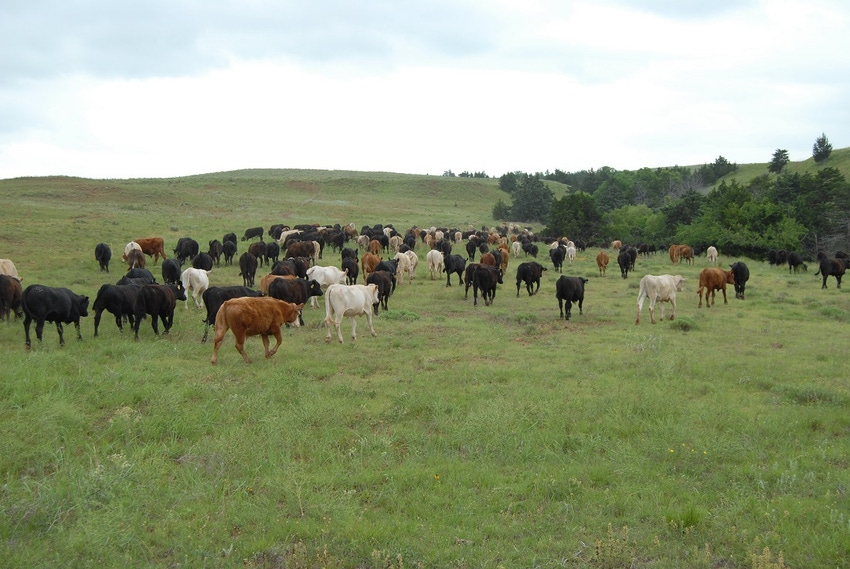
Montana rancher Ray Banister is my friend and he has added a bunch to my understanding of natural systems and their function in the past 10 years.
He recently reminded me that principles of great grazing do not change with location. Interestingly enough, he is located in the High Plains of eastern Montana, with its blue sky, volcanic soil, and low moisture. Allan Savory would call this area moderately to severely brittle because it has a fairly high infrequency of rainfall. For comparison, I am in middle Tennessee on old, oceanic soil that is charged with more than 50 inches of moisture annually, and this arrives on an almost weekly basis most years. Banister had received about two inches of moisture in 2018 as of April 10, while we were pushing 25 inches on the same date.
Banister says there are over 2,000 references in the Holy Scripture concerning land use, cattle, sheep, goats, horses, hogs, shepherds and land managers. Cattle and certainly sheep start early on and their importance continues both in the literal and allegorical senses throughout the scripture. Lessons therein show 4,000 years or more years ago it was recognized that land had a limited carrying capacity of livestock and people. The Lord seems to have directed people to spread out.
In brittle environments water development was essential, then and now. Today, water development is still recognized as essential for livestock production in all environments. Water resources need to be used and developed wisely. I am reminded of this fact every time I think of a local university dairy herd with a new $5 million facility that uses thousands of gallons of city water daily to flush the concrete. I lean the same way when I see thousands of acres being irrigated to grow corn for fuel.
Carrying capacity of our land resource is a major part of understanding the natural model. We are going to define carrying capacity as the number of cattle in 1,000-pound units that a given amount of land can support, measured in dry matter of forage and most needed nutrition throughout several years (probably 10 or more). Oklahoma rancher and consultant Walt Davis informs me that this is accurate. I argue that carrying capacity makes a longer-term statement than stocking rate.
Grass does not grow to any extent with cattle "standing on it." Our management and grazing mistakes have led to dead ground. Dead ground might be defined as bare, covered with noxious weeds and brush or low-successional grasses, or moving away from high biomass and plant diversity. All these signs show that piece of ground is headed toward desertification, and that includes monoculture farming and simple forage species development. Loss of plant diversity is the first clinical sign.
In the cattle business we are almost always better off to be slightly under-stocked, but with highly adapted animals that are time grazed in high densities with very frequent movement. It is almost routine to double carrying capacity after two years of instituting complete plant recovery followed by short-timed, high-animal-density grazing. In a western drought it may take five years and that's why I refer to the natural model as the two- to five-year plan.
There are areas that can handle a 1,000 pound unit per 25 acres most years. When we add a calf we often add five acres. In the east we have lots of ranches that can handle a pair on six to eight acres annually. Carrying capacity and stocking rate are similar but not the same thing.
If you elect to maximize carrying capacity remember that I'm not speaking of a notion. I'm promoting commitment, discipline and rules, including these things:
Cattle that keep easy, fit the ranch, and stay healthy.
High perennial-plant diversity and biomass.
High-energy plants with tall warm-season plants in majority.
Catching and efficiently using moisture and sunlight.
Complete plant recovery before grazing.
Short-timed, high-density grazing.
Planned, chaotic repetition.
Remember that if drought takes an operation out or results in severe destocking then the carrying capacity figures are headed south. Walt Davis writes about countries in the South Plains of Texas that had a carrying capacity of a cow per four acres 90 years ago. These cows probably weighed 750-850 pounds and today they might have a carrying capacity of 1,250 pounds to 28 acres. The good plants with high biomass and energy are absent. Grazing management errors, mostly the lack of complete plant recovery before cattle, took out the best plants and high plant diversity. The "desert" effect took out most of the cattlemen.
Profitability sits closely on the back of carrying capacity. It is really not a question as to why you will drive miles and miles in the West and seldom see more than a few cattle. The major expectation will be a feed yard visit. Big grazing mistakes, lack of system understanding and execution and possibly apathy, along with bad teaching, have severely reduced carrying capacities. We now have knowledge and equipment to fix the mistakes with huge progress in just two to five years.
About the Author(s)
You May Also Like






